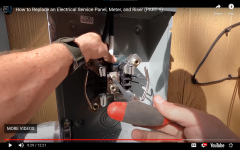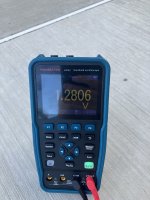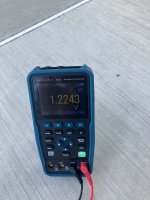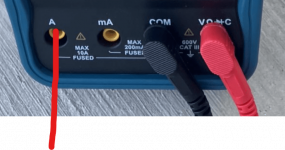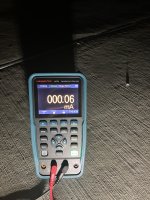Set the meter to read current and test between the same two point where you are reading 1.2 volts.
Note: Do not leave the meter configured for reading current.
Reconfigure for voltage immediately after testing for current.
If the meter is set for testing current when connected in parallel to 120 volts or 240 volts,
you will create a direct short and a big spark will blow up your meter.
You can measure amperage (10 amps max) in series with 120 or 240 volt appliances, but you need to know how to do that.
To configure for testing amperage, move the red lead to the A terminal as shown.
Set the meter to AC amps.
Test between the two points where you are reading 1.2 volts.
View attachment 441649


